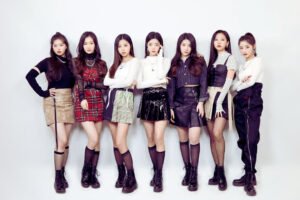05 The Evolution of Chic: Embracing Contemporary Style Trends
In the always developing universe of design, the expression “stylish” has ceaselessly been reclassified to catch the quintessence of contemporary style patterns. The development of stylish isn’t just about the change of apparel styles, yet additionally about the evolving perspectives, social movements, and mechanical progressions that impact how we dress. From the smooth lines of moderate plan to the striking assertions of vanguard design, contemporary stylish envelops a wide range of styles that mirror the different preferences and inclinations of the present chic people.

The Roots of Chic
The idea of stylish began in France, with the actual word signifying ‘snazzy’ or ‘rich.’ It was a term held for the tip top, the people who could manage high fashion and customized fitting. Be that as it may, as design turned out to be more democratized, stylish developed to incorporate a more extensive scope of styles and financial classes. This change in discernment permitted people from varying backgrounds to embrace stylish design, no matter what their experience or monetary status.
As the twentieth century advanced, stylish design became inseparable from a specific degree of complexity and refinement. It was presently not just about wearing costly fashioner names; it was tied in with developing a fashion awareness and certainty that rose above financial worth. Stylish design turned into a way for people to communicate their characters and goals, whether or not they were strolling down the roads of Paris or the walkways of New York City.
During the 1960s, stylish took on another importance with the ascent of prepared to-wear design and the rise of notorious creators like Coco Chanel and Yves Holy person Laurent. These planners altered the business by making superior grade, trendy dress open to the majority. Stylish design turned out to be more about mentality and character than about observing inflexible style guidelines, making ready for a more comprehensive and different style scene.
Today, stylish design keeps on developing, embracing a large number of impacts from road style to high form. It is not generally bound to the runways of Paris or Milan yet can be tracked down in urban communities and towns all over the planet. From the smooth lines of moderate plan to the striking tones and examples of streetwear, contemporary stylish design mirrors the variety and innovativeness of the advanced world.
Basically, stylish design isn’t just about what you wear, yet the way in which you wear it. It’s about certainty, mentality, and uniqueness. Whether you’re shaking a creator suit or a one of a kind Shirt, stylish design permits you to put yourself out there and say something without saying a word. It’s a festival of style, innovativeness, and self-articulation, and a pattern indicates that things are not pulling back at any point in the near future.
The Rise of Street Style
Road style arose as a strong power in the late twentieth 100 years, testing the customary ideas of stylish. It addressed the voice of the young, the metropolitan scene, and social variety. Road style presented the possibility that stylish could be restless, mixed, and open to all. It wasn’t just about the garments; it was about the demeanor and the certainty with which they were worn. This change in context reformed the design business, democratizing style and leading to another age of style powerhouses who commended distinction and self-articulation.
The roads turned into the new runway, with regular individuals displaying their one of a kind fashion instinct through intense varieties, unpredictable outlines, and startling mixes. From the dirty roads of London to the dynamic neighborhoods of Tokyo, road style turned into a worldwide peculiarity, impacting originators, big names, and design fans the same.
Road style likewise made light of a critical job in breaking boundaries and testing generalizations inside the design business. It celebrated variety in the entirety of its structures, embracing individuals of any age, foundations, and body types. Road style stars became social symbols, celebrated for their brave way to deal with design and their capacity to push limits and challenge show.
Lately, web-based entertainment has additionally intensified the effect of road style, permitting design devotees to promptly impart their shifts focus over to a worldwide crowd. Stages like Instagram have led to another age of road style powerhouses, who have amassed large number of supporters by exhibiting their unmistakable individual style and in vogue looks.
Today, road style stays a compelling power in the style world, molding patterns, moving fashioners, and affecting the manner in which we ponder style. It proceeds to advance and adjust to the changing scene of style, mirroring the dynamic and various nature of contemporary culture. Whether it’s a one of a kind propelled group or a state of the art cutting edge look, road style commends the opportunity of articulation and the force of distinction, validating that stylish exceeds all rational limitations.
Technology and Fashion
Road style arose as a strong power in the late twentieth 100 years, testing the customary ideas of stylish. It addressed the voice of the young, the metropolitan scene, and social variety. Road style presented the possibility that stylish could be restless, mixed, and open to all. It wasn’t just about the garments; it was about the disposition and the certainty with which they were worn.
With its underlying foundations in subcultures like troublemaker, hip-jump, and skating, road style defied the cleaned and frequently elitist picture of conventional stylish design. All things being equal, it celebrated uniqueness, self-articulation, and credibility.
Road style fans transformed walkways into runways, involving design as a type of self-declaration and disobedience to standard standards.
What set road style separated was its capacity to blend and match various components from different subcultures and styles, making a mixture of impacts that mirrored the assorted characters and encounters of metropolitan youth.
From realistic tees and tore pants to classic finds and Do-It-Yourself manifestations, road style permitted people to put themselves out there in manners that were exceptionally their own.
Be that as it may, maybe the most progressive part of road style was its democratizing impact on design. Dissimilar to customary stylish, which was frequently connected with extravagance brands and very good quality architects, road style made design available to all. There wasn’t any need to focus on how much cash you spent on your garments, yet how inventively you set up them.
As of late, road style has turned into a predominant power in the design world, impacting everything from runway assortments to standard patterns. Brands and fashioners currently focus on road style for motivation, perceiving its ability to shape and rethink the business.
Basically, road style has changed the idea of stylish, extending its limits to incorporate a more extensive scope of impacts and points of view. It has tested the thought that design is held for the first class, demonstrating that style is something that anybody can develop and communicate.
Furthermore, as we push ahead into the 21st hundred years, road style keeps on pushing the limits of what is viewed as popular, validating that stylish isn’t tied in with pursuing directions, yet about manufacturing your own way and claiming your novel fashion awareness
Sustainable Chic
Road style arose as a strong power in the late twentieth 100 years, testing the customary ideas of stylish. It addressed the voice of the young, the metropolitan scene, and social variety. Road style presented the possibility that stylish could be restless, mixed, and open to all. It wasn’t just about the garments; it was about the disposition and the certainty with which they were worn.
With its underlying foundations in subcultures like troublemaker, hip-jump, and skating, road style defied the cleaned and frequently elitist picture of conventional stylish design. All things being equal, it celebrated uniqueness, self-articulation, and credibility. Road style fans transformed walkways into runways, involving design as a type of self-declaration and disobedience to standard standards.
What set road style separated was its capacity to blend and match various components from different subcultures and styles, making a mixture of impacts that mirrored the assorted characters and encounters of metropolitan youth. From realistic tees and tore pants to classic finds and Do-It-Yourself manifestations, road style permitted people to put themselves out there in manners that were exceptionally their own.
Be that as it may, maybe the most progressive part of road style was its democratizing impact on design. Dissimilar to customary stylish, which was frequently connected with extravagance brands and very good quality architects, road style made design available to all. There wasn’t any need to focus on how much cash you spent on your garments, yet how inventively you set up them.
As of late, road style has turned into a predominant power in the design world, impacting everything from runway assortments to standard patterns. Brands and fashioners currently focus on road style for motivation, perceiving its ability to shape and rethink the business.
Basically, road style has changed the idea of stylish, extending its limits to incorporate a more extensive scope of impacts and points of view. It has tested the thought that design is held for the first class, demonstrating that style is something that anybody can develop and communicate.
Furthermore, as we push ahead into the 21st hundred years, road style keeps on pushing the limits of what is viewed as popular, validating that stylish isn’t tied in with pursuing directions, yet about manufacturing your own way and claiming your novel fashion awareness.
The Future of Chic
As we plan ahead, stylish will keep on developing. It will be formed by the up and coming age of originators, powerhouses, and shoppers who are unafraid to think outside the box. Innovation will continue to assume a crucial part, maybe with computer generated reality style shows and man-made intelligence planned dress turning into the standard. Anything what’s to come holds, one thing is sure: stylish will continuously be inseparable from change, mirroring the soul of the times.

FAQs
Q1: How has the meaning of ‘chic’ changed over time?
Stylish has developed from a term signifying restrictiveness and very good quality design to a more comprehensive idea that embraces different styles, societies, and financial foundations. It presently addresses class, yet additionally certainty, mentality, and natural cognizance.
Q2: What role has technology played in the evolution of chic?
Innovation has been vital in democratizing style. Through online entertainment and web based business, stylish has become more available, considering moment style motivation and the mixing of worldwide style.
Q3: Can chic be sustainable?
Totally. The contemporary comprehension of stylish incorporates supportability. About pursuing style decisions are harmless to the ecosystem and morally made, supporting brands that line up with these qualities.
Q4: What does street style contribute to the concept of chic?
Road style has presented a component of tenseness and genuineness to stylish. It’s about self-articulation and the combination of different social impacts, making stylish more engaging and dynamic.
Q5: What might the future of chic look like?
The eventual fate of stylish is probably going to be molded by innovative headways like computer generated experience and man-made intelligence, as well as a proceeded with center around supportability. It will stay an impression of social perspectives and mechanical advancement.
Conclusion
The development of stylish is an impression of our aggregate process through social movements, mechanical progressions, and a developing consciousness of our effect in the world. An idea has developed to envelop something beyond style — it’s about way of life, values, and personality. As we keep on embracing recent fad patterns, stylish remaining parts a dynamic and consistently evolving ideal, empowering us to put ourselves out there intensely and dependably. In embracing contemporary stylish, we’re not simply pursuing directions; we’re partaking in a development that praises variety, development, and manageability.

